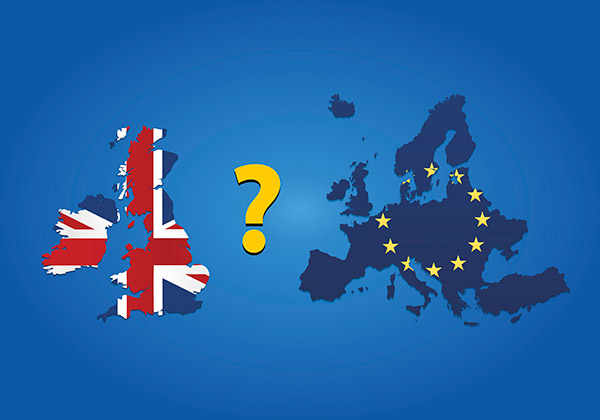Merih Uctum
December 20, 2016
In a referendum on June 23, 2016 Britain voted to leave the European single market paving the way to further turmoil in Europe. This note summarizes why this happened and the implications for Britain when it pulls out.
A brief historical background:
- European Economic Community (EEC), a free trade area, was established in 1958. Members agreed to a common external tariff on all goods entering the union and comply with common, harmonized rules and standards. The UK joined the EEC in 1973.
- In 1993 the European Single Market, or the European Union (EU), was completed upon the four-freedoms: freedom of movement of goods, services, capital and people. Britain was among the EU’s founding members.
- In 1999 a subset of the EU members adopted the euro, the single currency, establishing the European Monetary Union (EMU). Britain did not join it. Access to the single market imposes a variety of rules of engagement involving labor laws, immigration rules, common regulations and standards, which restrain local sovereignty. The relationship of Britain with the EU was difficult and tensions culminated in the vote for Brexit.
Main arguments of the leavers:
(i) Britain will save on the 350 million pounds it sends every week; (ii) Without EU’s burdensome regulations, British companies will be more competitive outside EU; (iii) Britain will be able to control its immigration from the EU, which is the most central issue in the Brexit debate based on the belief that EU migrants are taking jobs from the locals and exploit the country’s benefit system.
A fairly short time table:
According to the Lisbon Treaty, any member can withdraw from the EU unilaterally by invoking Article 50, which Britain announced it will do in spring of 2017. The withdrawal will become effective within two years, during which Britain will engage in negotiations with its partners to secure alternative arrangements. These treaties have to be approved with unanimity in the Council of Europe and ratified by each of the remaining 27 EU member states.
The government is expected to opt for a Hard Brexit, involving departure from the EU, the customs union, the single market and reaching free trade agreements with each partner. In a Soft Brexit, it would leave parts of the single market, subject to uncertain negotiations with the EU.
Impact on trade for Britain of a Hard Exit
Trade has two components: goods and services. Both have to be addressed to answer this question:
(i) Trade in goods with the EU
This component makes up about half Britain’s trade volume and over 4 million British jobs depend on exports to the EU. The leavers argue that the EU sells as much to Britain, so there is room for fruitful negotiations. But disentangling from the current arrangements is very difficult:
- Today trade in goods depends on complex cross-border supply chains, and final goods have more than one origin. Leaving the EU will take Britain out of these supply chains.
- To prevent goods of third-party countries entering the bloc by the back door, the EU implements the Rules of Origin principle to all its trading partners in a Free Trade agreement: the partners have to prove that the product is made mostly in the domestic economy. This is a very costly process.
(ii) Trade in services
This component, in particular that in financial services, comprises most of Britain’s interaction with the EU. More than half of the capital market and investment banking revenues generated in the City in 2012 were paid by EU clients. After Brexit, Britain will lose its “passports”, which allow financial services companies licensed in one EU state to provide services across the bloc. Major US, Japanese and Swiss banks, asset management and insurance companies use the UK as a hub for passporting into other EU markets, where they do not have branches. They are likely to move out. Without passport financial companies need to negotiate bilaterally with individual countries for each service they will sell.
Absent this system, to operate in the EU without having to establish a subsidiary, non-EU banks and investment firms need to follow “Equivalence rules”, which require their domestic regulations to replicate those in Europe. If domestic regulatory framework is different, each firm has to negotiate with the EU a separate agreement for each service it wants to trade with the union.
Leavers argue that Britain can reorient its service trade to non-EU countries because trade in services, as opposed to goods, will not involve transport costs. This view is challenged by International Monetary Fund’s finding that increased distance among partners hurts trade in both components because it harms services trade considerably since some services are complementary to goods trade.
Economic cost of a Hard Brexit
Trade with the EU makes up about half of Britain’s trade volume. This compares to 14% to the United States and about 30% to non-EU partners. Estimates of economic costs vary hugely up to 10% of a decline in GDP in 15 years, with a deleterious effect on public finances, social services and investment. The resilience of the economy after the referendum is not indicative of what will happen when Britain triggers Article 50 and adopts the Hard Brexit. Since the referendum Britain is enjoying the privileges of the single market and benefiting from a substantial depreciation of the currency, which provided a considerable competitive edge to British exporters to the EU.
Limiting EU-originated immigration is estimated to generate a modest increase in wages of medium and higher-income workers and a modest decrease in wages of low-income workers. A slowdown of the economy is expected to hurt employment more. Moreover, disappearance of EU subsidies to farmers will depress earnings in agriculture and will represent a political challenge.
Leavers argue that deregulation will help the economy because it will increase productivity and therefore output growth. However, the UK has already one of the lighter regulated economies and the EU rules are similar to international standards that any non-EU country should be implementing. In addition, after the 2008 crisis to calm the voters’ anger the UK had itself tightened its rules. Thus, any productivity gain due to deregulation would be negligible. The loss from potentially decreased trade is more likely to lower productivity gains acquired in the last decade.
Alternative models that can replace the Single Market
- World Trade Organization, WTO, rules set tariffs on goods and services traded worldwide and create a restricted market access for trade in goods.
- Free Trade agreement (Example Canada-EU) eliminates all tariffs between partners. It takes a long time to establish and is subject to the costly “Country of Origin” rule.
- European Economic Area, EEA (Norway/Iceland/Liechtenstein) allows countries access to the single market but also binds them, without any say in the matter, by the EU single market rules and regulations and makes them contribute to the EU budget. This is an option contradicting the Brexit spirit that seeks to move out of the EU’s regulatory environment.
- Switzerland-style deal is similar to the EEA rules but with more flexibility. Bilateral agreements allow Switzerland to pick and choose the areas of the union they want to participate and the rules they want to follow. It requires constant renegotiations. It is not clear that the EU will accept the Swiss vote to limit EU immigration.
- EU banking union allows passporting for financial services if financial institutions abide by the regulations of the European Banking Authority and the Single Supervisory Mechanism, and if the UK allows free labor mobility in financial services.
Britain is moving towards uncharted waters and the government does not appear to have a plan of action. The economic and political implications for the country and Europe can be substantial.






